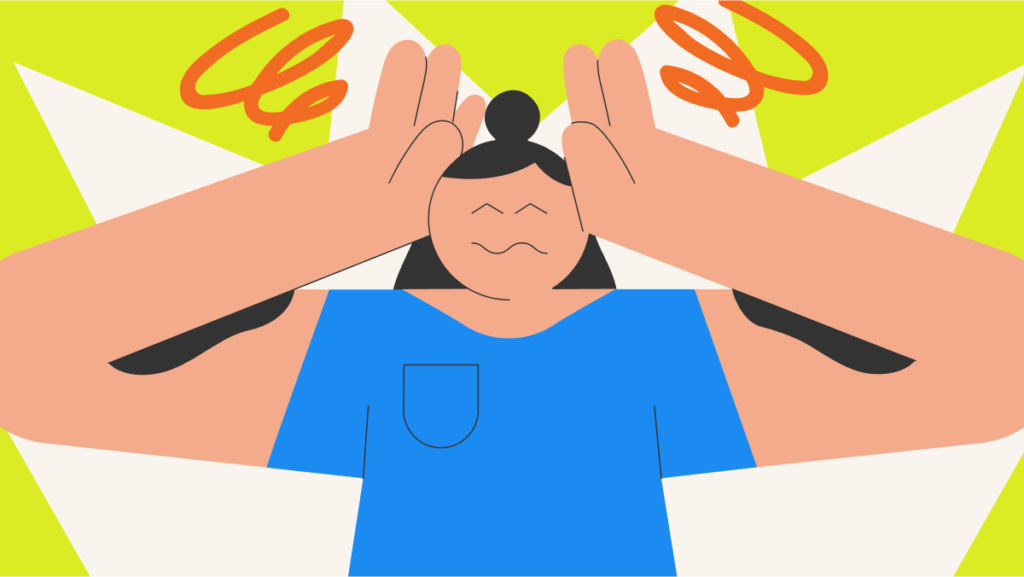Raising kids today is a journey filled with both challenges and triumphs. From early puberty and the lasting effects of the pandemic to the pervasive influence of social media, children (ages 3 to 11) and adolescents (ages 12-19) face unique obstacles.
Surveys on child and adolescent concerns in Singapore concur:
- From 2015 to 2017, the number of children aged 5-9 calling the Institute of Mental Health’s (IMH) Community Health Assessment Team (CHAT) hotline surged more than fivefold.
- In 2022, 1 in 3 adolescents (ages 10-18) reported mental health symptoms such as depression, anxiety, or loneliness.
- Overall, depression and anxiety symptoms among Singaporean youths (ages 4 to 21) led to an average of 24 missed school days and a 63% decline in academic performance.
In short, it’s tough to be a child or adolescent these days, but understanding their challenges can empower us to support them effectively and help them thrive.
Brain evolution from childhood to adolescence
Childhood
The early years are a dynamic period for a child’s brain development. By age five, a child’s brain is forming vital connections that support their cognitive, emotional, and social development. During this time, it’s completely normal for children to face challenges with sleeping, eating, or adjusting to new routines as their brains and bodies synchronise.
Starting school introduces exciting opportunities and new experiences, but it also comes with its own set of challenges, such as making friends and adapting to a structured environment. Developmental delays might also affect motor skills, language, and social-emotional regulation. During this time, our patience and encouragement can go a long way in helping children navigate these transitions with confidence.
Adolescence
The teenage years are a whirlwind of changes. As hormones surge during puberty, emotions can feel like a rollercoaster, with mood swings and heightened stress becoming part of daily life. The brain’s emotional and reward systems also go into overdrive, making teens more likely to seek novelty and take risks. While this can lead to occasional turbulence, it also offers a chance for growth and self-discovery.
At this stage, issues like depression, anxiety, and behavioural disorders may start to rear their head. In fact, according to the World Health Organisation (WHO), these conditions are among the top causes of illness and disability for adolescents across the globe. But with the right guidance and support, teens can develop resilience and coping strategies.
Child and adolescent concerns
Did you know the prefrontal cortex, which controls impulse regulation, decision-making, and judgement, continues to mature until our mid-20s? This explains why children and adolescents often experience intense emotions.
In Singapore, our young ones encounter specific stressors that can impact their wellbeing. Here’s how we can help them navigate these challenges:
1. Family dynamics: In Singapore, children from single-parent households often face more problems compared to their peers from dual-parent families. To create a nurturing environment for them, stability and open communication are key.
2. Trauma: In Singapore, the lifetime prevalence of Adverse Childhood Experiences (ACEs)—potentially traumatic events occurring before the age of 18—is nearly 64%. Connecting children and adolescents to professional help can aid in healing.
3. School performance: In Singapore’s competitive education system, the pressure to excel can cause stress, anxiety, and contribute to low self-esteem. It pays to celebrate effort and progress, rather than just results.
4. Bullying: In 2022, Singapore reported two bullying incidents per 1,000 primary school students and five per 1,000 secondary school students. Young individuals are also more vulnerable to online bullying and sexual harassment online.
5. Transitions: Whether it’s moving up a grade, attending a new school, or relocating from other countries, adjustment periods can be tough. Children and adolescents will benefit from regular check-ins on the challenges they are facing.
6. Social comparison: In Singapore, the impact of Instagram usage on social anxiety and low self-esteem has been well-documented. Encouraging self-acceptance and focusing on individual strengths can help counteract the pressures of social media.
7. Relationships: Friendship and relationship conflicts can weigh heavily on children and adolescents who lack the skills to handle emotional ups and downs. Open conversations and emotional support go a long way in helping them navigate complex feelings.
8. Sexual orientation and gender identity: In terms of support for LGBTQ couples, Singapore ranks in the bottom half of countries surveyed. As such, adolescents exploring their sexual orientation or gender identity may face discrimination and rejection.
When should my child or adolescent seek help?
There’s a distinction between a child with frequent mood swings and one who remains persistently sad for weeks. Similarly, it’s one thing for an adolescent to disregard their curfew and another for them to break the law.
It’s important to recognise when a child or adolescent may need additional support. Emotional intensity is normal, but persistent difficulties or significant changes in behaviour can indicate a need for professional guidance. Signs to watch for include:
- Persistent difficulties lasting a long time
- Uncharacteristic or unusual behaviour that doesn’t resolve
- Self-harm and suicidal thoughts
- Threats to their own or another individual’s safety
- Challenges impacting the child’s development
- Situations that feel overwhelming for parents or caregivers
Common disorders among children and adolescents
When addressed early, many challenges can be managed effectively, allowing children and adolescents to thrive. Here are some common areas where early intervention can make a significant difference:
1. Developmental disorders
The Diagnostic and Statistical Manual of Mental Disorders, 5th Edition (DSM-5) defines neurodevelopmental disorders as “a group of conditions with onset in the developmental period.”
These disorders typically manifest early in development – often before the child enters grade school – and are characterised by developmental deficits that impair personal, social, academic, or occupational functioning.
Common neurodevelopmental disorders include:
Autism Spectrum Disorder (ASD): Children and adolescents with ASD often have problems with social communication and interaction, and restricted or repetitive behaviours or interests. They may also may also have different ways of learning, moving, or paying attention. Consequently, they may struggle to develop and maintain friendships, communicate with peers and adults, or understand the behaviours expected in school.
Attention-Deficit/Hyperactivity Disorder (ADHD): Children and adolescents with ADHD tend to fall within three subtypes: inattentive (i.e.struggling to pay attention), impulsive-hyperactive subtype (i.e. displaying overactive behaviour and struggling to control their urges), or a combination of both. As of 2024, approximately 1 in 10 children in the United States is diagnosed with ADHD.
Specific Learning Disorder: This category includes impairments in reading (Dyslexia), written expression, and/or mathematics that begin during the school-age years. Symptoms may include inaccurate or slow and effortful reading, poor written expression that lacks clarity, difficulties remembering number facts, or inaccurate mathematical reasoning.
Other neurodevelopmental disorders include intellectual disabilities, communication disorders, and motor disorders.
2. Emotional disorders
1 in 10 teenagers in Singapore suffers from at least one mental health disorder, according to a study by the National University of Singapore in 2022. The WHO identified anxiety and depressive disorders to be the most common emotional disorders among adolescents:
- Anxiety affects 3.6% of 10 to 14-year-olds and 4.6% of 15 to 19-year-olds
- Depressive disorders affect 1.1% of adolescents aged 10 to 14 years and 2.8% of 15 to 19-year-olds
These can lead to social withdrawal, which exacerbates isolation and loneliness, and even suicide. Between 2020 and 2021, the Samaritans of Singapore (SOS) hotline saw a 127% increase in calls and 23.3% increase in deaths by suicide.
3. Eating disorders
Eating disorders often accompany depression and anxiety, manifesting through harmful behaviours like calorie restriction or binge eating. These disorders usually develop during adolescence or early adulthood and are more prevalent in females than males. Key eating disorders include:
- Anorexia Nervosa: An intense fear of gaining weight leads to severe calorie restriction and an extreme thinness.
- Bulimia Nervosa: Characterised by episodes of binge eating followed by purging behaviours such as vomiting or excessive exercise.
- Binge Eating Disorder: Involves frequent episodes of consuming large amounts of food uncontrollably, without subsequent purging.
4. Disruptive, Impulse-Control, and Conduct Disorders
Disruptive, impulse control and conduct disorders are characterised by difficulties with self-control that often result in destructive actions that may violate societal norms and threaten the safety of others.
Typically, such behaviours are first observed in childhood and they tend to be more common in males than females.
These disorders include:
Oppositional Defiant Disorder (ODD): ODD is marked by a persistent pattern of angry or irritable mood, argumentative or defiant behaviour, or vindictiveness, particularly toward authority figures like parents and teachers.
Intermittent Explosive Disorder (ED): IED is characterised by recurrent outbursts of anger or violence—both verbal and physical—that are disproportionate and stem from an inability to control aggressive impulses.
Conduct Disorder (CD): CD involves persistent, severe behavioural problems, including violating the rights of others or societal norms, due to poor temper control. According to the WHO, conduct disorder affects 3.6% of 10–14-year-olds and 2.4% of 15–19-year-olds.
Other disruptive, impulse control and conduct disorders include Pyromania (a desire to set fire to things) and Kleptomania (a desire to steal things one doesn’t generally need).
Manage child and adolescent concerns at Intellect Clinic
Left untreated, mental health disorders in children and adolescents can lead to serious challenges, like poor health, struggles in school, and difficulties in social situations. There’s also a higher risk of drug abuse, self-harm, and suicidal behaviour, with many of these problems continuing into adulthood.
In Singapore, only clinical psychologists and psychiatrists can provide an official diagnosis. At Intellect Clinic, our clinicians are dedicated to supporting your child, offering early intervention and ongoing care to help them develop the skills needed to navigate their formative years successfully.
50-minute sessions with our counsellors and clinical psychologists are priced at $160 and $240 (Singapore dollars) respectively, and we offer appointments at our clinics in:
- Marina One
- Dhoby Gaut
- Tanjong Pagar
- Woodleigh
- Tembeling








